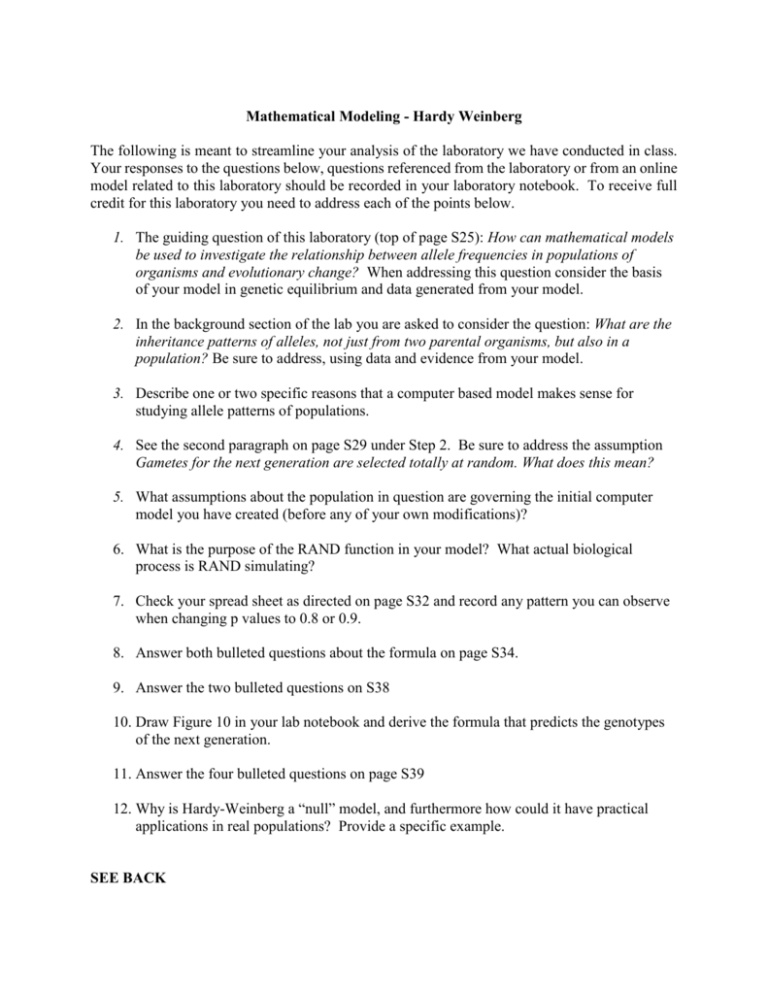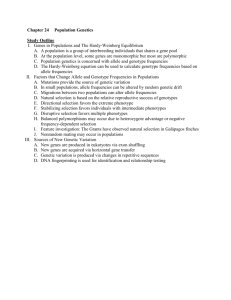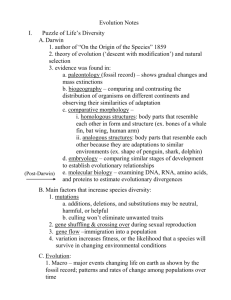Hardy Weinberg Modeling Guidelines
advertisement

Mathematical Modeling - Hardy Weinberg The following is meant to streamline your analysis of the laboratory we have conducted in class. Your responses to the questions below, questions referenced from the laboratory or from an online model related to this laboratory should be recorded in your laboratory notebook. To receive full credit for this laboratory you need to address each of the points below. 1. The guiding question of this laboratory (top of page S25): How can mathematical models be used to investigate the relationship between allele frequencies in populations of organisms and evolutionary change? When addressing this question consider the basis of your model in genetic equilibrium and data generated from your model. 2. In the background section of the lab you are asked to consider the question: What are the inheritance patterns of alleles, not just from two parental organisms, but also in a population? Be sure to address, using data and evidence from your model. 3. Describe one or two specific reasons that a computer based model makes sense for studying allele patterns of populations. 4. See the second paragraph on page S29 under Step 2. Be sure to address the assumption Gametes for the next generation are selected totally at random. What does this mean? 5. What assumptions about the population in question are governing the initial computer model you have created (before any of your own modifications)? 6. What is the purpose of the RAND function in your model? What actual biological process is RAND simulating? 7. Check your spread sheet as directed on page S32 and record any pattern you can observe when changing p values to 0.8 or 0.9. 8. Answer both bulleted questions about the formula on page S34. 9. Answer the two bulleted questions on S38 10. Draw Figure 10 in your lab notebook and derive the formula that predicts the genotypes of the next generation. 11. Answer the four bulleted questions on page S39 12. Why is Hardy-Weinberg a “null” model, and furthermore how could it have practical applications in real populations? Provide a specific example. SEE BACK Extension: Using the model below systematically investigate the consequences of changing variables (parameters) on the simulated population. This model is more advanced than the one you created and will allow you to modify several parameters. Think about modifying parameters related to selection (fitness), migration, genetic drift, mutation or generations. Before using this model develop some of your own questions about the evolution of allele frequencies in a population, record at least three questions in your lab notebook Experiment with the following model: AlleleA1 https://faculty.washington.edu/herronjc/SoftwareFolder/AlleleA1.html Using the model can you determine answers to any of your questions? If so, record in your lab notebook.











